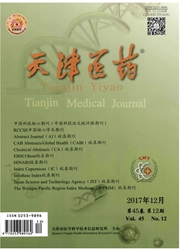

 中文摘要:
中文摘要:
目的构建并评价新型三维复合仿生网络的组织相容性。方法采用仿生学方法,将壳聚糖、羟基磷灰石、明胶、果胶按一定比例制成新型三维复合仿生网络,将小鼠胚胎成骨细胞MC3T3-E1与材料进行复合培养,通过倒置相差显微镜、石蜡切片常规染色、扫描电镜、F-DA荧光染色法评价细胞相容性;将制备好的生物支架材料植入SD大鼠的背部皮下,术后2、4、8、12周评价组织相容性、血管化能力及体内降解情况。结果新型三维复合仿生网络呈三维多孔状,细胞在材料上贴附生长良好,呈多角形或梭形,形态饱满;皮下包埋实验发现:早期有轻微的炎症反应,随时间延长而消退,后期有血管化发生,材料降解吸收比较缓慢。结论新型三维复合仿生网络组织相容性好,易于血管化,是一种很好的骨组织工程支架材料。
 英文摘要:
英文摘要:
Objective To construct novel 3-D composite bionic network and evaluate the histocompatibility . Meth- ods The novel 3-D composite bionic network was prepared from chitosan, hydroxyapatite, gelatin and pectin in certain ra- tio by biomimtic approach, which was co-cultured with MC3T3-E1. The cell compatibility was studied by using inverted phase contrast microscope, routine paraffin section staining, scanning electron microscopy and F-DA staining. The resultant scaffold material was implanted into the dorsal subcutaneous space of SD rats. The histocompatibility, blood vessel capabili- ties and the degradation of the material were observed 2, 4, 8 and 12 weeks after surgery. Results The structure of novel 3- D composite bionic network was three-dimensional and porous. The cells attached on scaffolds attached and grew well with polygonal or fusiform form. It was found that inflammatory reactions were alleviated gradually in the early stage . There was an increasing angiogenesis at late stage. Materials degraded and absorbed more slowly. Conclusion The present study sug- gests that the novel 3-D composite bionic network has good histocompatibility with easy vascularization, and will be a candi- date scaffold for bone tissue engineering.
 同期刊论文项目
同期刊论文项目
 同项目期刊论文
同项目期刊论文
 期刊信息
期刊信息
